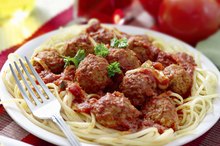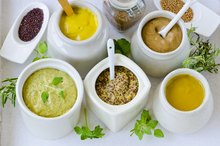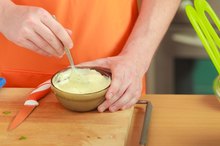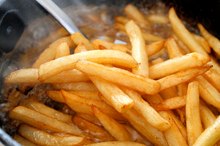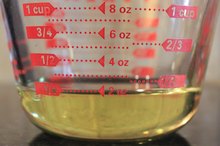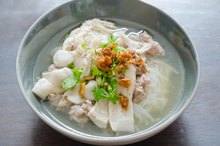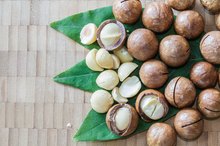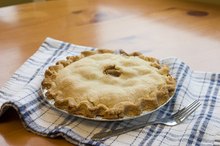How to Cook With Safflower Oil
Safflowers are thistle-like plants, meaning they do not have large flowery blooms. Safflower seeds are pressed to make cooking oils. Safflower oil is considered a good cooking oil because it is low in saturated and trans fats, making it a heart-health alternative to butter or shortening 3. Two types of safflower oil exist, and each is used for a different purpose when cooking 3. Monounsaturated safflower oil has a high smoking point, which means you can use it to create hot dishes that require oil 3. However, polyunsaturated safflower oil is much more delicate and you should not use it for high heat cooking 3. Instead, it is more suitable for a salad dressing or sauce.
Thin-coat your pan with high-heat safflower oil to replace your traditional stir-fry oil in your next stir-fry 3. Heat to a high temperature, adding your favorite vegetables and lean proteins. Because safflower oil does not add much flavor to a recipe, you will find the flavors of your foods more pronounced 3.
The Calories in Meatballs
Learn More
Replace the traditional oil in your pancake recipe for high-heat safflower oil 3. The oil is ideal for replacing vegetable, coconut or palm kernel oil in baked goods recipes. Pancakes are a good place to start because the oil does not clash with the sweet flavor. You also can use safflower oil in cake and cookie recipes or use it to make at-home pie crusts 3.
Replace canola oil with safflower oil in your next curry recipe 3. Not only will this enhance the flavor, safflower oil also is higher in monounsaturated fat -- the good kind of fats -- and has less saturated fat than canola oil 3.
Dijon Mustard Nutrition
Learn More
Create a marinade for your chicken using high-heat safflower oil combined with herbs and spices of your choice; incorporate salt, pepper, paprika, garlic, cayenne pepper or other spices 3. Place the chicken in your marinade and allow to sit for several hours or overnight to let the flavors soak in.
Tips
A study conducted at Ohio State University found that consuming 1 2/3 tsp. of safflower oil helps reduce the risk for experiencing cardiovascular disease in women. Incorporating safflower oil via cooking or salad dressing can have taste and heart-healthy benefits.
Warnings
Storing safflower oil improperly can cause it to break down more quickly. Store the oil in cool, dry pantry away from the heat of the stove and sunlight.
Related Articles
References
- HealthCastle: Which Cooking Oil Is Best?
- MarthaStewart.com; Food Facts: Safflower Oil; January 2008
- FineCooking.com: Safflower Oil
- Schagen SK, Zampeli VA, Makrantonaki E, Zouboulis CC. Discovering the link between nutrition and skin aging. Dermatoendocrinol. 2012;4(3):298-307. doi:10.4161/derm.22876
- Memorial Sloan Kettering Cancer Center. Vitamin E. Updated February 6, 2015.
- Norris LE, Collene AL, Asp ML, et al. Comparison of dietary conjugated linoleic acid with safflower oil on body composition in obese postmenopausal women with type 2 diabetes mellitus. Am J Clin Nutr. 2009;90(3):468-76. doi:10.3945/ajcn.2008.27371
- Thalheimer, Judith C. RD, LDN, RD, LDN Heart-Healthy Oils: They're Not All Created Equal. Today's Dietitian. Vol. 17 No. 2 P. 24 February 2015
- Muth, Natalie Dugate, MD, MPH, RD, CSSD, FAAP. Sports Nutrition for Health Professionals F.A. Davis Company. 2015
- Vannice, Gretchen, and Heather Rasmussen. “Position of the Academy of Nutrition and Dietetics: Dietary Fatty Acids for Healthy Adults.” Journal of the Academy of Nutrition and Dietetics 114.1 (2014): 136–153. doi: 10.1016/j.jand.2013.11.001
Writer Bio
Rachel Nall began writing in 2003. She is a former managing editor for custom health publications, including physician journals. She has written for The Associated Press and "Jezebel," "Charleston," "Chatter" and "Reach" magazines. Nall is currently pursuing her Bachelor of Science in Nursing at the University of Tennessee.
